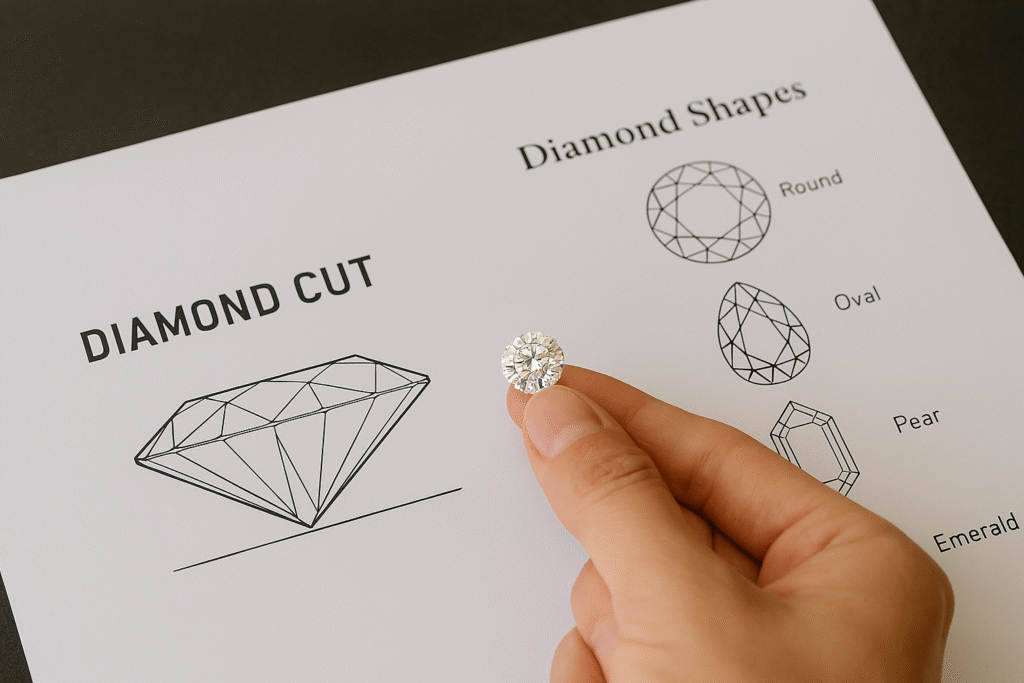Buying a diamond is deeply personal. Yet many buyers fall into what I call “the comparison curse.” The moment a friend shows off their engagement ring, the thought comes: “I want mine to be bigger, clearer, or better.”
The truth is simple: every diamond is unique, just like every buyer’s story. Chasing someone else’s stone often leads to disappointment or overspending. The goal is not to outshine your friend—it’s to find a diamond that matches your taste, budget, and lifestyle.
The Emotional Trap of Comparison
Research shows that 42% of diamond buyers admit comparing their purchase to someone else’s ring. This behavior often drives impulsive decisions and inflated budgets.
As an expert with 40+ years in gemology and the diamond trade, I’ve seen clients regret buying a “status” stone instead of the right one for them.
The key is this: Your diamond should reflect your values, not your neighbor’s.
Case Example
One client came to me after buying a 2-carat diamond just to keep up with her friend. A year later, she traded it for a smaller, better-cut diamond that actually looked brighter and matched her taste.
This is proof that size or “social comparison” is never the full story.
Practical Advice
- Focus on cut and brilliance over size. A well-cut 1.5-carat can outshine a poorly cut 2-carat.
- Set your budget first. Avoid spending just to match someone else’s stone.
- Look for certification. Always buy diamonds with GIA or AGS grading reports.
- Think about wearability. Choose what feels comfortable for daily life, not just for social media photos.
FAQ
Q: Why do people compare their diamonds to others?
A: Because jewelry is emotional and visible. But comparison often leads to overspending.
Q: Can a smaller diamond look better than a larger one?
A: Yes. A well-cut smaller diamond often has more sparkle than a larger but poorly cut one.
Q: What is the smartest factor to prioritize?
A: Cut quality. Research shows cut contributes up to 60% of a diamond’s sparkle.
Q: Should I buy the same diamond shape as my friend?
A: No. Choose a shape that flatters your hand and fits your personal style.
Suggested reading:
How to Budget for an Engagement Ring
Understanding Diamond Quality Factors
Introduction
Welcome to our Technology AI Emerging Tech FAQ.
Here, you’ll find clear answers to common questions about artificial intelligence, emerging technologies, and their impact on daily life.
This guide helps you understand AI tools, automation, and the latest tech trends quickly and easily.
Whether you are a beginner or an enthusiast, these insights will help you make informed decisions about adopting and using technology.
FAQ Section
What is Artificial Intelligence (AI)? – Technology AI Emerging Tech Explained
Artificial intelligence (AI) is technology that allows machines to perform tasks that normally require human intelligence.
Examples include smart assistants, voice recognition, language translation, and self-driving cars.
AI continues to evolve rapidly, influencing industries such as healthcare, finance, manufacturing, and education.
Understanding AI basics helps you leverage its benefits while avoiding potential risks.
What Are Emerging Technologies? – Technology AI Emerging Tech Insights
Emerging technologies are innovations that are reshaping our world.
Key examples include AI, blockchain, quantum computing, augmented reality (AR), virtual reality (VR), and Internet of Things (IoT) devices.
These technologies impact how we work, learn, communicate, and even entertain ourselves.
Staying aware of emerging tech trends ensures you can adapt to new opportunities and challenges.
How Does AI Impact Daily Life? – Practical AI Applications
AI powers tools like personalized recommendations, automated customer service, smart home devices, and medical diagnostics.
It improves efficiency, reduces errors, and helps individuals and businesses make smarter decisions.
Even simple tasks like filtering emails, scheduling appointments, or optimizing energy use are increasingly managed by AI systems.
Are AI and Automation Safe? – Technology AI Emerging Tech Safety
AI is generally safe when designed ethically and monitored carefully.
Developers must follow guidelines to prevent bias, misuse, or unintended consequences.
Regulations, ethical frameworks, and transparent design practices help ensure AI benefits society responsibly.
Learning how AI systems work improves your confidence and safety when using emerging tech.
How Can I Learn About AI and Emerging Tech? – Beginner’s Guide
You can learn through online courses, tech blogs, webinars, or hands-on projects.
Following tech news, experimenting with AI tools, and joining tech communities keeps you updated.
Many platforms also provide free tutorials, coding exercises, and AI simulations to help you gain practical experience.
Learn more:
. Learn about advanced AI research.



